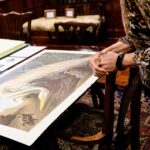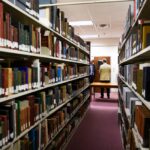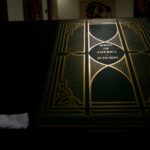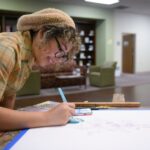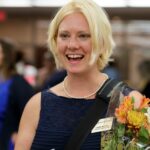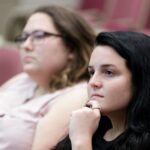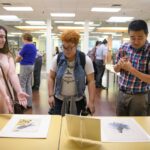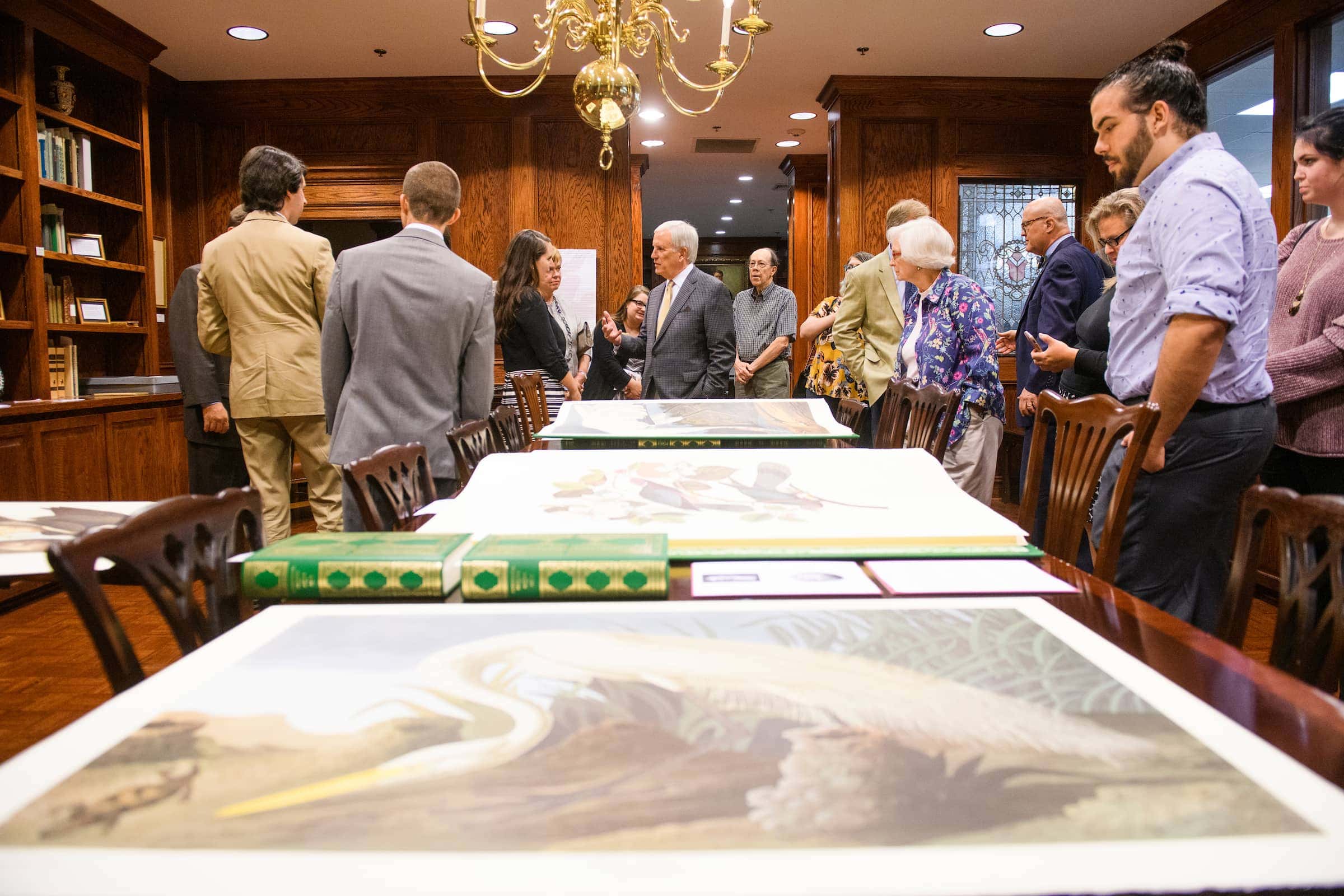
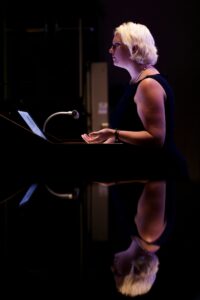
The Brenau University Trustee Library displayed more than texts on Wednesday, Sept. 25, as it hosted a reception celebrating the Graham Arader Arts & Science Collaborative, an initiative to provide students access to the university’s impressive collection of naturalist art.
The university’s Permanent Art Collection is perhaps best known for its modern and pop art works, including many by Roy Lichtenstein, Andy Warhol, James Rosenquist and more. But thanks to a partnership with Arader, leading American art dealer, the university’s collection now includes hundreds of pieces of a different nature.
The reception Wednesday included a lecture on the history of naturalist art from Claudia Wilburn, chair of the Art & Design Department and director of the Center for the Arts & Design. Guests were then invited to view a great selection of the works in the Arader Art Fund on display in both the library and the Science Building.
Founded in 1971, Arader Galleries is the world’s leading dealer and auction house of rare maps, prints, books and watercolors of the 16th through 19th centuries. Part of Arader’s mission is not only to celebrate naturalist art but to share it with young people. His reasoning, he said, is that he believes the American higher education system to be the nation’s greatest accomplishment.
“Our 3,900 colleges and universities are the greatest thing the people of the United States have done, ever,” he said. “It’s something we should all be very proud of, and I want to be part of the lives of all the young people learning at those institutions. It’s very exciting for me.”
The newest naturalist works, both given and promised, to Brenau’s collection include 119 botanical prints, 79 gold and copper engravings of fish dating to the 17th century, 27 floral watercolors by 19th-century artist Edwin Dalton Smith, 122 color-printed lithographs by John James Audubon, 118 hand-colored copperplate engravings by Francois-Nicolas Martinet, and 48 stipple engravings from Pierre-Joseph Redouté.
Part of Arader’s mission is to combine his passion for naturalist art and his respect for higher education. He does not intend for the art to be stored away where no students can engage with it. In order to truly put into practice Arader’s educational intention, the university assigned two professors to take on the curricular use of these works — Wilburn and Deirdre Cassell, instructor of science and Arader Faculty Coordinator.
Cassell said the goal is to build an interdepartmental effort. Courses in the sciences and humanities are already utilizing the works. One biology class at Brenau makes an annual spring trip to the Yucatan Peninsula in Mexico, where students compile a sketchbook of biological diagrams. Cassell plans to have that course use these works as inspiration for how to do biological sketches.
“In the sciences especially, we tend to get very caught up in strict facts, numbers and data,” she said. “We don’t always have the opportunity to allow our students to think creatively. So incorporating art is going to open up those ideas for students and allow them to see things in other ways, to expose them to the ability to view biological principles as artistic.”
The funding of the pieces is due to a number of people who all share a passion for art that represents and depicts the natural world. Dr. Michael Stubblefield, an international leader in cancer rehabilitation, and his wife, Elyn, provided funding for the purchase of the botanical prints. The donation of the Smith watercolors was made possible by philanthropists Young Sohn and Mark Armenante, who were connected to the university by Arader, as was retired U.S. Navy Adm. James Stavridis, who supported the purchase of the botanical art.
In addition to these donations, other natural science artworks at Brenau include the William L. Wood Collection of Sculptured Wildflowers — masterpieces of realistic detail made of paper-thin, oil-painted pieces of brass, copper and tin, they are carefully hand cut, shaped and joined into lifesize specimens — and a complete four-volume set of Audubon’s Birds of America, which contains 435 full-sized prints, donated by Delano and Caroline Mixon in 1993.
“The Permanent Art Collection at Brenau University is impressive for a university the size of Brenau,” said Brenau President Anne Skleder. “For 140 years Brenau has educated students with a strong foundation in the liberal arts and humanities. These gifts strengthen our ability to inspire students. Further, the intersection of arts and sciences exemplified by these works is precisely what is most needed in a world in which separating the disciplines is more common than bringing them together. We are in of and for Gainesville/Hall County, and are delighted that the members of our community will join us in learning from these works.”
For more information about the Arader Art Fund, read the Brenau Window story at window.brenau.edu/articles/the-head-and-the-heart.
- A guest views a print from the Amsterdam edition of Audubon’s “Birds of America”
- Tunnel view of the Graham Arader Research Room in Trustee Library
- Art students surprise Professor Claudia Wilburn with flowers following her lecture
- Abbeville Press double elephant folio of John James Audubon’s “Birds of America”
- Art student Jennifer Benitez paints a replica of a print from the Arader collection
- Professor Claudia Wilburn receives flowers from students
- Guest takes notes during Claudia Wilburn’s lecture
- Students listen intently during Claudia Wilburn’s lecture
- Students view prints from the Arader collection
